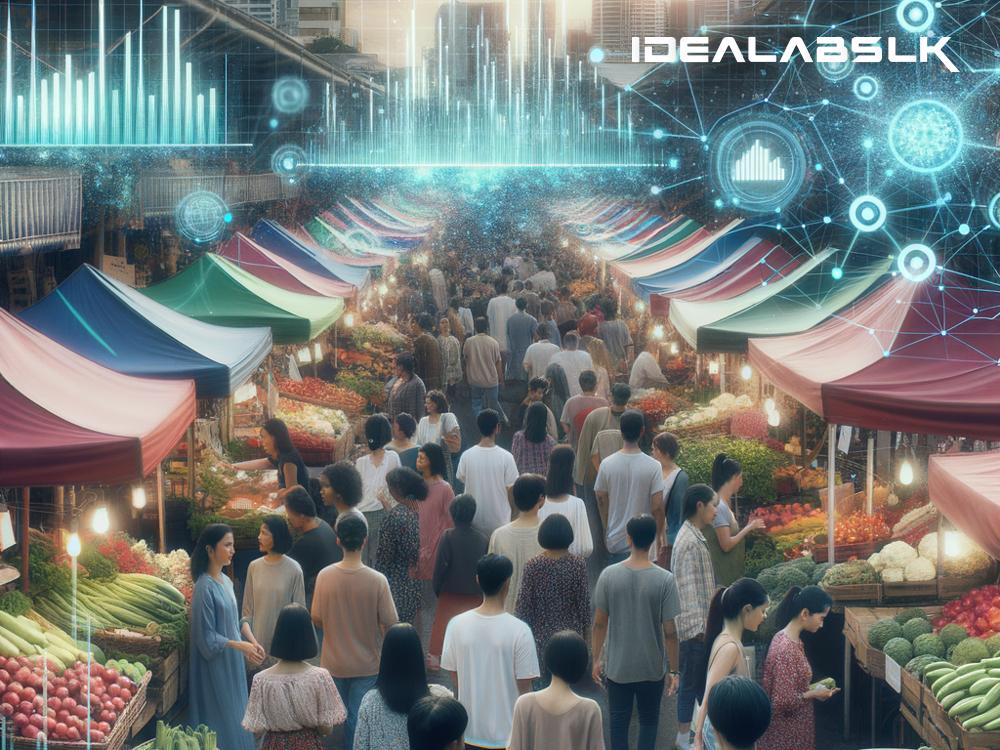AI-Driven Demand Forecasting in Seasonal Food Markets: A Smart Move for a Sustainable Future
In the colorful world of seasonal food markets - where the fragrance of fresh produce fills the air and the vibrant hues of fruits and vegetables catch the eye - lies a hidden challenge. The fluctuating demand, influenced heavily by seasons, festivities, and rapidly changing consumer preferences, often results in either a surplus or a shortage. This is where Artificial Intelligence (AI) comes into play, bringing a touch of modernity to tackle a traditional problem: predicting demand to reduce waste and increase efficiency in seasonal food markets.
Understanding AI-Driven Demand Forecasting
At its core, AI-driven demand forecasting uses smart computer systems to predict how much of a product consumers will buy in the future. It's like having a crystal ball, but instead of magic, it uses data and algorithms. These AI systems analyze vast amounts of historical sales data, weather trends, economic indicators, and even social media sentiment to make accurate predictions.
The beauty of AI lies in its ability to learn and improve over time. The more data it analyzes, the better it becomes at foreseeing what's next. This continuous learning process ensures that predictions become more accurate, helping farmers, retailers, and everyone in between to make better decisions.
The Seasonal Twist
Seasonal food markets are unique. Unlike markets for products that are available year-round, these markets deal with fruits, vegetables, and other perishables that have specific harvest times. This means that the availability of produce is naturally limited to certain months or seasons.
The challenge here is twofold. First, predicting demand in these markets is inherently more complex due to the influence of external factors like holidays, weather conditions, and even global events. Second, errors in demand forecasting can have severe consequences, from famers over-planting and wasting resources to retailers facing shortages, leading to disappointed customers and lost sales.
This is where AI-driven forecasting becomes a game changer. By integrating seasonal patterns, real-time data, and trends, AI models can predict demand with remarkable accuracy, helping optimize the supply chain. This means less waste, happier customers, and more profitable businesses.
Real-Life Benefits of AI in Seasonal Food Markets
Let's illustrate the benefits of AI-driven demand forecasting with a few examples:
- Reduced Waste: With more accurate predictions, farmers can plan their planting and harvesting schedules more efficiently, reducing the amount of produce that goes unsold and wasted.
- Optimized Inventory Management: Retailers can stock up exactly what they need, ensuring that the fresh produce reaches the consumer without sitting too long in storage or running out prematurely.
- Consumer Satisfaction: By ensuring that the right products are available at the right time, retailers can keep their customers happy, fostering loyalty and repeat business.
Challenges and Considerations
While the benefits are compelling, implementing AI-driven demand forecasting comes with its set of challenges. The quality of predictions depends heavily on the data's quantity and quality. Smaller markets or those new to digitization may find it harder to leverage AI effectively. Moreover, the initial cost and expertise required to set up and maintain such systems can be barriers for some.
Despite these challenges, the potential rewards make exploring AI-driven forecasting worthwhile for many in the seasonal food market. The key is to start small, focus on collecting quality data, and gradually scale as confidence in the system grows.
The Path Forward
As our world becomes more connected and data-driven, the role of AI in optimizing how we grow, distribute, and consume food is only expected to grow. For seasonal food markets, AI-driven demand forecasting is not just a technological upgrade; it's a step toward a more sustainable and resilient food system.
In conclusion, while there's no one-size-fits-all solution, incorporating AI into demand forecasting offers a promising path forward. By leveraging technology, we can tackle the age-old challenges of seasonal food markets in new and innovative ways, making our food systems more efficient, sustainable, and responsive to the ever-changing desires of consumers around the globe. With AI, the future of seasonal food markets looks not just brighter, but smarter too.

